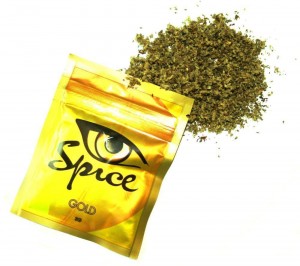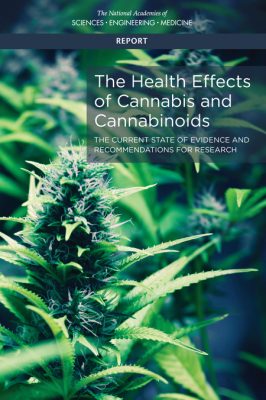Caffeine One of Several Compounds That May Protect Against Dementia
A 2017 article by Yousuf O. Ali and colleagues in the journal Scientific Reports finds that 24 different compounds may boost a brain enzyme that protects against dementia. The enzyme, NMNAT2, protects neurons from stress and combats misfolded proteins called tau that form plaques in the brain as people age.
Ali and colleagues screened 1280 compounds to identify those that might increase NMNAT2 production. Twenty-four of these looked promising, including caffeine and rolipram, an “orphaned drug” once studied as an antidepressant but discontinued in the 1990s. Others with weaker effects on NMNAT2 production included the atypical antipsychotic ziprasidone, cantharidin (a wart-removing substance secreted by blister beetles), fungal metabolite wortmannin, and retinoic acid, a vitamin A derivative. Thirteen of the compounds tested decreased NMNAT2 production.
The researchers followed up the caffeine finding by testing caffeine in mice genetically engineered to produce less NMNAT2. The caffeine administration normalized NMNAT2 production levels in these mice.
Senior researcher Hui-Chen Lu hopes this research will lead to the development of new drugs that can create a chemical blockade against the effects of neurodegenerative illnesses.
Bipolar Disorder and Diabetes Linked
 A systematic literature review in 2016 showed a definitive link between bipolar disorder and diabetes. Bipolar disorder almost doubles the risk of diabetes while diabetes more than triples the risk of bipolar disorder. The article by Ellen F. Charles and colleagues was published in the International Journal of Bipolar Disorders.
A systematic literature review in 2016 showed a definitive link between bipolar disorder and diabetes. Bipolar disorder almost doubles the risk of diabetes while diabetes more than triples the risk of bipolar disorder. The article by Ellen F. Charles and colleagues was published in the International Journal of Bipolar Disorders.
The review included seven large cohort studies. The studies, based on elderly populations only, examined bipolar disorder and diabetes rates. Charles and colleagues suggested that shared mechanisms could cause both illnesses. New disease models that explain the link between bipolar disorder and diabetes could lead to better treatments.
The review also reported that both bipolar disorder and diabetes were independently associated with risk of cognitive decline and dementia in these elderly individuals. People with diabetes had more brain atrophy on average than others who share their age and gender but did not have diabetes. People with bipolar disorder who also had diabetes and either insulin resistance or glucose intolerance had neurochemical changes in the prefrontal cortex that indicated poor neuronal health. In some cases, these patients also had reduced brain volume in the hippocampus and cortex.
In Case Control Study, Two-Thirds of Patients With Severe Depression Had Underlying Metabolic Abnormalities
 A recent study suggests that potentially treatable metabolic abnormalities in the central nervous system may underlie a large proportion of cases of severe, treatment-resistant depression. These abnormalities, such as folate deficiency in the cerebrospinal fluid, are not screened for regularly, as they require a spinal tap to diagnose.
A recent study suggests that potentially treatable metabolic abnormalities in the central nervous system may underlie a large proportion of cases of severe, treatment-resistant depression. These abnormalities, such as folate deficiency in the cerebrospinal fluid, are not screened for regularly, as they require a spinal tap to diagnose.
Researchers led by Lisa A. Pan were inspired to assess metabolic function in people with treatment-resistant depression after a young patient with severe, persistent depression who had attempted suicide several times improved dramatically after being diagnosed with a tetrahydrobiopterin deficiency in his cerebrospinal fluid and treated for the deficiency. Tetrahydrobiopterin is critical to the production of monoamine neurotransmitters.
The researchers carried out a case-control study of 33 teen and young adult patients who had had treatment-resistant depression since childhood and 16 healthy control participants. Twenty-one of the 33 patients with severe depression had metabolic abnormalities in their cerebrospinal fluid. Twelve had cerebral folate deficiencies (but no folate deficiency in blood tests). Those who took folinic acid for at least six weeks (1–2 mg/kg/day) in addition to their regular medications showed sometimes dramatic improvement in their depression.
Other metabolic issues identified in the patients with severe depression included abnormal levels of acylcarnitine in five patients, low tetrahydrobiopterin intermediates in one, low guanidinoacetate in another, and unusual creatine/creatinine ratios in three patients. None of the healthy participants had any metabolic abnormality.
While the study, published in the American Journal of Psychiatry in 2017, was small, it suggests that the underlying causes of some severe depression cases are going undiagnosed and untreated. The authors suggest that assessment of metabolic function should be more common in cases of severe treatment-resistant depression.
Depression Increases Heart Disease Risk to Same Extent That Obesity, High Cholesterol Do
 In men, depression seems to be equal to obesity and high cholesterol in increasing heart disease risk. A German study about heart disease risk included 3,428 men between the ages of 45 and 74 who were observed over a period of 10 years.
In men, depression seems to be equal to obesity and high cholesterol in increasing heart disease risk. A German study about heart disease risk included 3,428 men between the ages of 45 and 74 who were observed over a period of 10 years.
In an article in the journal Atherosclerosis, lead researcher Karl-Heinz Ladwig reported that while high blood pressure and smoking are the most powerful risk factors for fatal cardiovascular disease, depression is comparable to obesity and high cholesterol levels. Depression accounts for about 15% of cardiovascular deaths.
Ladwig suggests that depression screening should be standard in patients with other risk factors for heart disease.
Editor’s Note: Long-term preventive treatment for depression may have the added benefit of preventing heart attacks. In people with two prior depressions, most guidelines now recommend lifetime continuation of antidepressant treatment.
Teens with Bipolar Disorder at Increased Risk for Cardiovascular Disease
 A scientific statement from the American Heart Association reported in 2015 that youth with major depressive disorder and bipolar disorder are at moderate (Tier II level) increased risk for cardiovascular disorders. The combined prevalence of these illnesses in adolescents in the US is approximately 10%.
A scientific statement from the American Heart Association reported in 2015 that youth with major depressive disorder and bipolar disorder are at moderate (Tier II level) increased risk for cardiovascular disorders. The combined prevalence of these illnesses in adolescents in the US is approximately 10%.
There are many factors that contribute to this risk, including inflammation, oxidative stress (when the body falls behind neutralizing harmful substances produced during metabolism), dysfunction in the autonomic nerve system, and problems with the endothelium (the inner lining of blood vessels). Lifestyle factors include adversity in early life, sleep disturbance, sedentary lifestyle, poor nutrition, and abuse of tobacco, alcohol, or other substances.
Taking some atypical antipsychotics as treatment for bipolar disorder also contributes to the risk of cardiovascular problems by increasing weight and/or lipid levels. Among the atypicals, ziprasidone (Geodon) and lurasidone (Latuda) come with the lowest likelihood of weight gain.
The statement by Benjamin I. Goldstein and colleagues that appeared in the Heart Association-affiliated journal Circulation suggested that therapeutic interventions should address some of these risk factors to help prevent cardiovascular problems and improve life expectancy for young people with depression or bipolar disorder. These could include a good diet, regular exercise, and treatments with good long-term tolerability that are aimed at preventing episodes.
The Role of Inflammatory Markers and BDNF
Inflammation worsens the risk of cardiovascular problems, while brain-derived neurotrophic factor (BDNF), which protects neurons and plays a role in learning and memory, may improve prospects for someone with depression or bipolar disorder.
A 2017 article by Jessica K. Hatch and colleagues including Goldstein in the Journal of Clinical Psychiatry suggests that inflammation and BDNF are mediators of cardiovascular risk in youth with bipolar disorder. The study looked at 40 adolescents with bipolar disorder and 20 healthy controls.
Those with bipolar disorder had greater waist circumference, body mass index, and pulse pressure than the controls. The youth with bipolar disorder also had higher levels of the inflammatory cytokine Il-6. Participants who had lower BDNF had greater thickness of the carotid vessel internal lining (intima media).
Hatch and colleagues point to the importance of prevention strategies in adolescents with these indicators of increased cardiovascular risk. These data complement the American Heart Association’s recognition of adolescent mood disorders as a large problem that deserves wider attention both in psychiatry and in the media.
Overdoses Possible on Synthetic Marijuana
 Several states have reported upticks in overdoses from synthetic marijuana over the past few years. Synthetic marijuana, sometimes called “spice” and sold under descriptors such as “botanical incense,” consists of man-made chemicals that are sprayed on plant matter and smoked, or sold as liquids to be consumed via e-cigarettes. Monitoring the Future, an ongoing survey of teen drug use in the US, reported in 2016 that 3.5% of high school seniors had used synthetic marijuana in the past year. The risks of the drug are not yet well known, since the chemicals used may vary from batch to batch.
Several states have reported upticks in overdoses from synthetic marijuana over the past few years. Synthetic marijuana, sometimes called “spice” and sold under descriptors such as “botanical incense,” consists of man-made chemicals that are sprayed on plant matter and smoked, or sold as liquids to be consumed via e-cigarettes. Monitoring the Future, an ongoing survey of teen drug use in the US, reported in 2016 that 3.5% of high school seniors had used synthetic marijuana in the past year. The risks of the drug are not yet well known, since the chemicals used may vary from batch to batch.
A case series published in the Western Journal of Emergency Medicine in 2016 described 11 cases of patients who received emergency room treatment for an overdose of the synthetic cannabinoid MAB-CHMINACA. According to the Drug Enforcement Agency, MAB-CHMINACA can cause severe toxicity, seizures, excited delirium, cardiotoxicity and death.
Kenneth D. Katz and colleagues reported that all 11 patients required sedation, while nine required intubation to provide respiratory support. Three of the 11 patients had seizures, and one suffered from hyperthermia (increased body temperature). One patient died as a result of decreased oxygen to the brain and rhabdomyolysis, a condition in which muscles break down and release toxins, shutting down the kidneys. Many of the 11 were children or adolescents.
Katz and colleageus stress that synthetic cannabinoid use is a public health crisis, and that emergency rooms should be prepared to provide aggressive sedation and respiratory support to people overdosing on MAB-CHMINACA.
Editor’s Note: ‘Spice’ is not only more potent than marijuana but also lacks the cannabinoids that are responsible for the beneficial effects of marijuana.
Decriminalization of Marijuana Linked to Lower Educational Attainment
As more states pass laws allowing the use of medical marijuana, and some are decriminalizing recreational marijuana use, researchers are examining possible negative consequences of loosening these drug policies. Researcher Andrew Plunk and colleagues reported in a 2016 issue of the journal Drug and Alcohol Dependence that states where medical marijuana has been legalized have seen dropout rates increase among high school seniors. Educational attainment after high school has decreased as well.
Plunk stressed that while policies that allow medical marijuana and decriminalize recreational marijuana use may have benefits, it is also important to study any possible negative consequences of these policies. He compared marijuana to alcohol and cigarettes, substances that are legal for adults to use but also negatively impact users’ health. Plunk told Medscape Medical News that as marijuana gets approved for medical uses, kids may begin to see the drug as less risky.
Plunk and colleagues used datasets from the US Census and the American Community Survey from 1990 to 2012, which included a total of 5,483,715 people of high school age. Compared to young people in states with no legalized marijuana policies, those in states with medical marijuana had a 0.40 percentage point increase in the probability they would not receive a high school diploma or GED.
Living in a state with medical marijuana was also linked to a 1.84 percentage point increase in the probability of not enrolling in college, and a 0.85 percentage point increase in the probability of not getting a college degree.
While medical marijuana is not prescribed to minors, Plunk and colleagues believe it is easier for adolescents in states where medical marijuana is available to access marijuana that has been prescribed to adults.
Editor’s Note: Heavy marijuana use comes with risks such as doubling of the likelihood of psychosis, hastening the onset of schizophrenia and bipolar disorder, increasing cognitive impairment, and changing brain structure.
Early Marijuana Use Linked To Abnormal Brain Function, Low IQ
 A study of depression and marijuana use found that using marijuana before the age of 17 was linked to abnormal brain function and lower IQ. In a 2016 article in the journal Acta Psychiatrica Scandinavica, researcher Elizabeth Osuch and colleagues described a study that compared four categories of youth: frequent pot users with depression, frequent pot users without depression, those with depression who did not use pot, and healthy individuals who did not use pot. The researchers also compared those who began using pot after the age of 17 to those who began earlier.
A study of depression and marijuana use found that using marijuana before the age of 17 was linked to abnormal brain function and lower IQ. In a 2016 article in the journal Acta Psychiatrica Scandinavica, researcher Elizabeth Osuch and colleagues described a study that compared four categories of youth: frequent pot users with depression, frequent pot users without depression, those with depression who did not use pot, and healthy individuals who did not use pot. The researchers also compared those who began using pot after the age of 17 to those who began earlier.
The main findings were that brain function in the areas of reward processing and motor control differed across the four groups. Depression was linked to deficits in brain function. Marijuana use did not correct these deficits, and in some parts of the brain, worsened them.
Those who had used marijuana before the age of 17 had abnormalities in memory, visuo-spatial processing, self-referential activity, and reward processing. Those who had started using marijuana at younger ages also had lower IQ scores.
National Academy of Sciences, Engineering and Medicine Issues Report on the Health Effects of Cannabis
 In early 2017, the National Academy of Sciences, Engineering, and Medicine issued its first comprehensive report on cannabis since 1999. Shifting public opinion over the past few decades has led to 28 states and the District of Columbia legalizing medical uses of marijuana, and eight states and DC legalizing recreational marijuana use. The Health Effects of Cannabis and Cannabinoids: Current State of Evidence and Recommendations for Research is intended to address the lack of accepted standards to guide individuals in deciding whether and how to use cannabis safely. In addition to summarizing recent health-related findings on cannabis, the report also offers recommendations to guide future research.
In early 2017, the National Academy of Sciences, Engineering, and Medicine issued its first comprehensive report on cannabis since 1999. Shifting public opinion over the past few decades has led to 28 states and the District of Columbia legalizing medical uses of marijuana, and eight states and DC legalizing recreational marijuana use. The Health Effects of Cannabis and Cannabinoids: Current State of Evidence and Recommendations for Research is intended to address the lack of accepted standards to guide individuals in deciding whether and how to use cannabis safely. In addition to summarizing recent health-related findings on cannabis, the report also offers recommendations to guide future research.
The report shares findings about possible therapeutic benefits to cannabis use as well as health impacts relating to areas such as cancer, respiratory disease, immunity, pre- and post-natal health.
There were several notable findings with regard to mental health. The committee that issued the report found substantial evidence of a statistical association between cannabis use and the development of schizophrenia or other psychoses, with the highest risk among the most frequent users.
The committee also found moderate evidence of a link between cannabis use and increased symptoms of mania and hypomania in people with bipolar disorder who use cannabis regularly. The report also describes moderate evidence of an association between heavy cannabis use and increased suicidal ideation and suicide attempts.
There was also moderate evidence that regular cannabis use is linked to social anxiety disorder.
The report described factors that may lead to problem cannabis use. The committee found substantial evidence that being male, smoking cigarettes, and beginning cannabis use at an earlier age are risk factors for developing problem cannabis use. Read more
Continuing Marijuana Use After a First Episode of Psychosis Increases Risk of Relapse
 A 2016 article in the journal JAMA Psychiatry reports that continuing to use cannabis after a first episode of psychosis increases risk of relapse. The study by Sagnik Bhattacharyya and colleagues employed longitudinal modeling to determine the role of cannabis use in psychotic relapse. The researchers followed 90 women and 130 men for two years after a first episode of psychosis, and found that the more marijuana they used, the more likely they were to have a relapse of psychosis.
A 2016 article in the journal JAMA Psychiatry reports that continuing to use cannabis after a first episode of psychosis increases risk of relapse. The study by Sagnik Bhattacharyya and colleagues employed longitudinal modeling to determine the role of cannabis use in psychotic relapse. The researchers followed 90 women and 130 men for two years after a first episode of psychosis, and found that the more marijuana they used, the more likely they were to have a relapse of psychosis.
Relapse rates were highest (59.1%) for participants who used pot continuously following their first episode of psychosis. Relapse rates were lower (36.0%) for those who used cannabis intermittently thereafter, and lowest (28.5%) among those who discontinued cannabis use after their first episode of psychosis.
A statistical test known as a cross-lagged analysis was used to establish that cannabis use affected later relapse, rather than relapse of psychosis leading to further cannabis use.
Another statistical strategy using fixed-effect models revealed that risk of psychotic relapse was 13% higher during times of cannabis use than during periods of no cannabis use.
These findings offer some hope that the likelihood of psychosis relapse can be reduced, since ongoing cannabis use is a risk factor that can be modified, unlike family history or genetics. Bhattacharyya and colleagues called for research into interventions that can help discourage cannabis use in people who have had a first episode of psychosis.
Editor’s Note: N-acetylcysteine, a nutritional supplement sold in health food stores, can reduce cannabis use compared to placebo in teen users.



